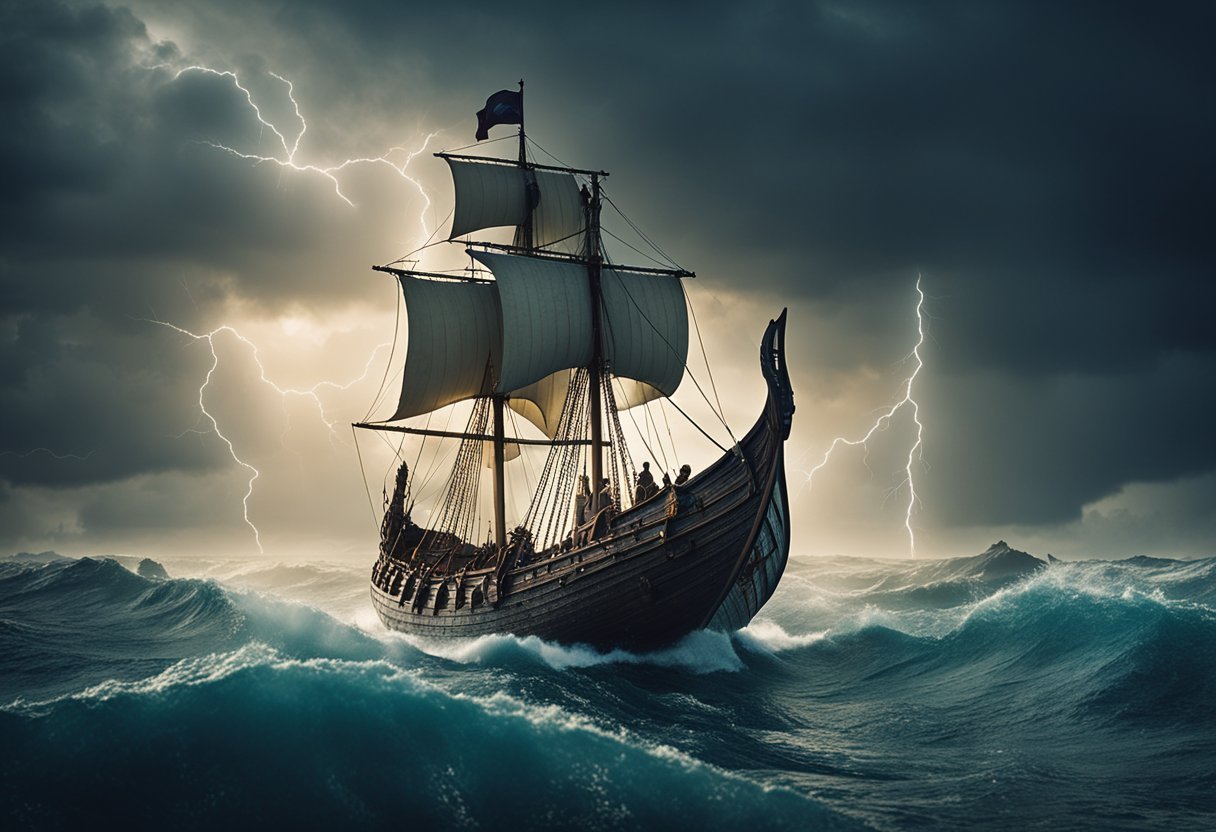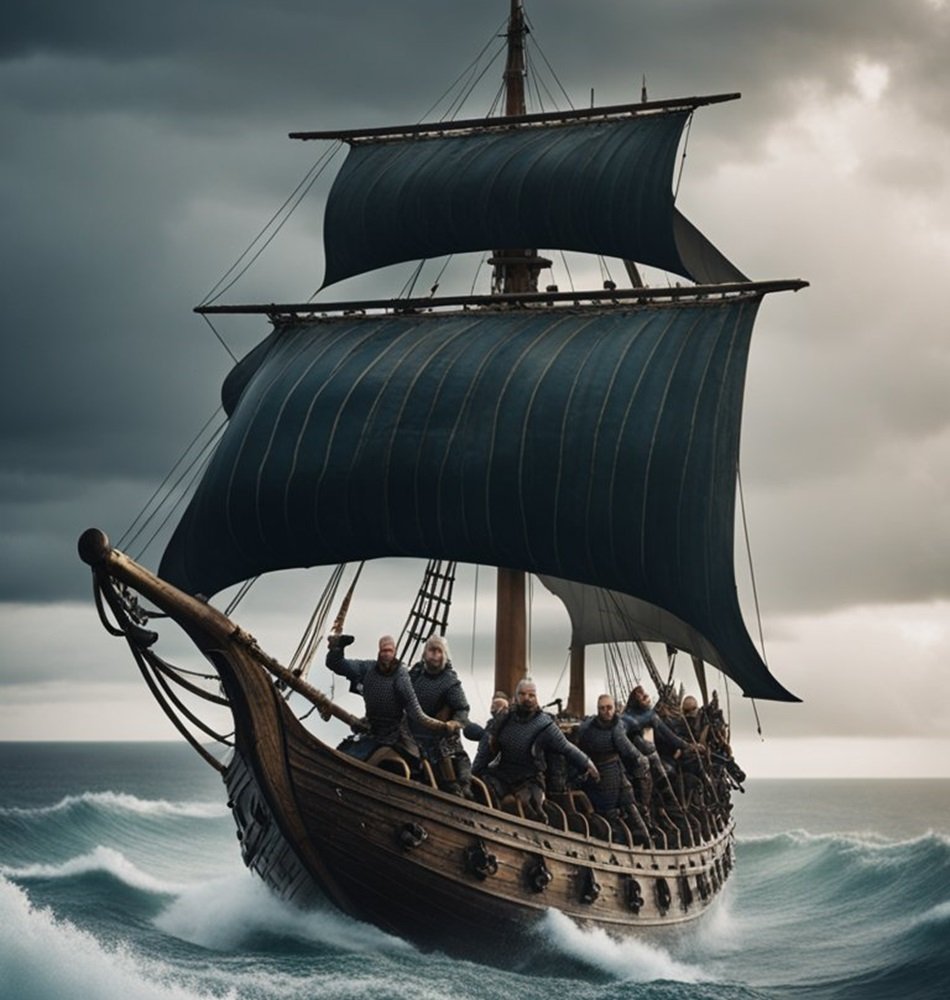The Norse Vikings, a group of seafaring warriors from Scandinavia, have long fascinated historians and enthusiasts alike with their rich mythology and storied past. From around 800 to the 11th century, these formidable warriors embarked on voyages that shaped the course of European history, raiding and trading in equal measure. Central to Viking culture were the sagas and eddas, recounting tales of gods such as Odin, Thor, and Loki, whose adventures were intricately woven into the fabric of Norse life.
Most intriguing is the creation myth that has the first gods slaying a giant and using his body parts to form the world, encapsulating the Vikings’ view of the universe. The World Tree Yggdrasil, with its many realms, stood at the center of these myths, connecting the heavens, earth, and underworld. This vivid cosmology culminates in Ragnarök, the prophesied doom where old gods fall and the world is reborn.
In addition to their legendary exploits, the Vikings were also master storytellers. Their skaldic poetry captured not only their heroic deeds but also the essence of their everyday lives. For centuries, these myths and stories were passed down orally, eventually becoming an indelible part of the cultural history of Scandinavia. The intersection of history and myth in Viking lore offers a captivating glimpse into a world where the divine and the mundane were deeply intertwined.
Viking Society and Culture

Viking society was a complex web of daily activities, artistic achievements, and deep-seated religious beliefs. Each aspect of their living reflected their values and way of life.
Daily Life and Governance
Daily life for Vikings involved a mix of farming, trading, and raiding. Farming was crucial; they grew crops like barley, rye, and oats. Livestock such as cattle, pigs, and sheep were common. Trading was also vital, with goods like furs, ivory, and amber exchanged across Europe.
Governance was decentralized. Local assemblies called Things managed legal matters. These assemblies allowed free men to voice opinions and resolve disputes. Chieftains held power locally, often leading raids and managing resources. Their society prioritized fairness and community decisions, shaping how they lived and ruled.
Artistic Endeavors and Craftsmanship
Vikings were known for their intricate art and craftsmanship. Wood carving was common, adorning ships and buildings with elaborate designs. They also excelled in metalwork, producing weapons that were both functional and decorative.
Jewelry like brooches, arm rings, and necklaces reflected their craftsmanship. Many pieces featured interlacing patterns and mythological scenes. Textiles were another area where Vikings shined. Women often wove beautiful fabrics that were both practical and decorative. These artistic endeavors illustrated their appreciation for beauty and attention to detail.
Religion and Mythology
Religion played a central role in Viking culture. They believed in a pantheon of gods like Odin, Thor, and Freyja, who influenced their daily lives. Norse mythology provided a framework for their understanding of the world, war, and fate.
Vikings conducted rituals and sacrifices, seeking favor from the gods. They believed in an afterlife, with warriors hoping to reach Valhalla, a hall where they would join Odin. Runes, their writing system, held magical significance and were used in various ceremonies. Religion and mythology were woven into their identity, shaping everything from daily decisions to long-term goals.
Viking Exploration and Expansion

The Norse Vikings were remarkable for their far-reaching voyages, fierce conquests, and lasting legacies. From establishing settlements across Europe to becoming legendary figures, they left a profound impact on history.
Settlements and Conquests
The Vikings were not just raiders but also adept settlers. They established colonies in places like Iceland, Greenland, and even briefly in North America, known as Vinland. They created vibrant communities, blending with the local populations.
In England, they founded the Danelaw, a region under Viking control. The Vikings also settled in parts of France, forming Normandy. Their expansion wasn’t limited to Europe; they ventured into the Mediterranean, reaching as far as North Africa and Constantinople.
Famous Figures and Legends
Several iconic figures emerged from Viking history. Leif Erikson is famed for his journey to North America around the year 1000, well before Columbus. Ragnar Lothbrok, though semi-legendary, symbolizes Viking excellence in battle and leadership.
Norse mythology intertwined with their history, with gods like Odin and Thor inspiring the Vikings. This mythological influence spurred them to undertake daring expeditions and conquests, shaping their identity and actions.
Legacy and Influence
Viking expansion left a significant cultural and genetic mark across Europe. Their integration into local societies influenced language, culture, and politics. For instance, the Normans were descendants of Vikings and played a crucial role in European history.
Trade routes established by Vikings spanned vast regions, connecting Scandinavia with distant lands. Their storied past continues to captivate modern imagination, inspiring books, movies, and TV series. The imprint of their voyages and settlements remains evident in various facets of contemporary society.

